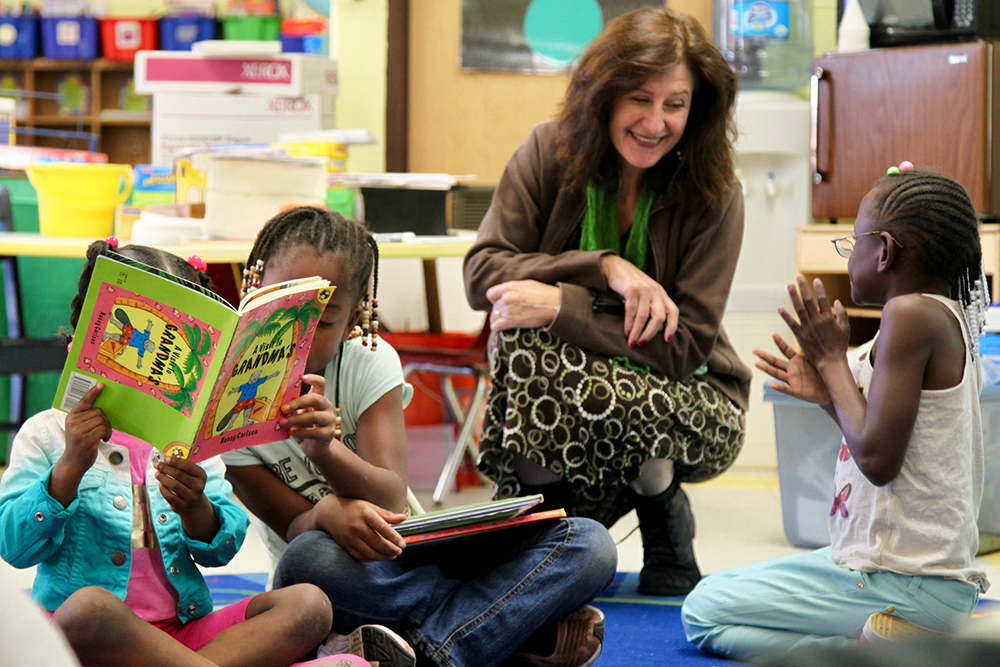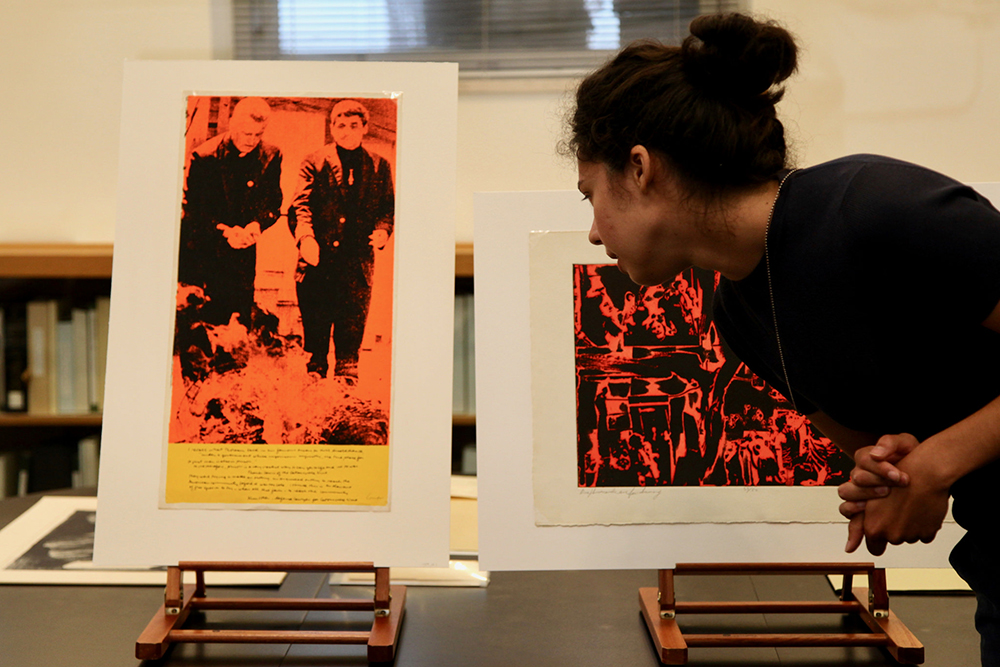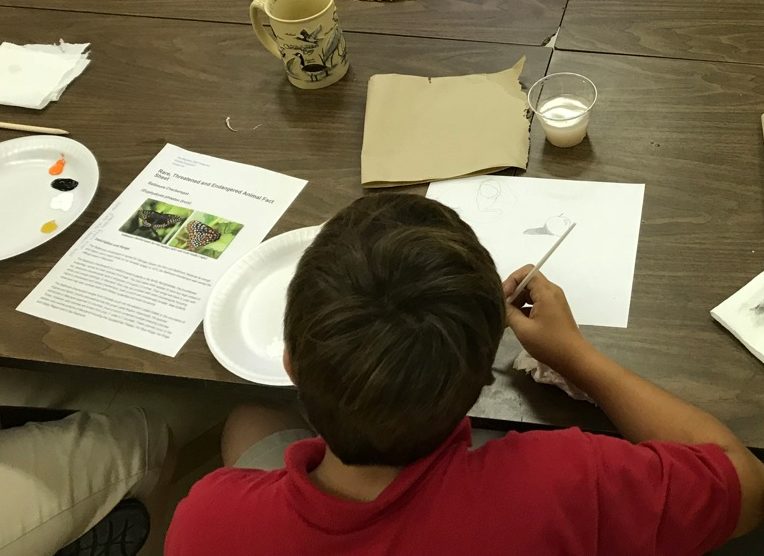Blog
Summer Arts & Learning Academy to Double in Size, Serve 2,200 Students
Young Audiences’ Summer Arts & Learning Academy (SALA), the innovative, free, five-week arts-integration program for Baltimore City Public Schools students, will double in size this summer, expanding to eight sites and serving nearly 2,200 students across Baltimore City.
New data show that arts integration at SALA reduces summer learning loss and improves academic performance.
The Academy will be held July 9 to August 10, 2018, at eight sites: Commodore John Rodgers Elementary, Lakeland Elementary/Middle, Steuart Hill Academic Academy, Lyndhurst Elementary, Sinclair Lane Elementary, Gardenville Elementary, Edgecombe Circle Elementary and the newly renovated and expanded Dorothy I. Height Elementary. Now in its fourth year, the program engages students in hands-on creativity while exploring math and literacy with local teaching artists and teachers.
Students will participate directly with 86 teaching artists (local, working artists trained for classroom instruction) – twice as many artists as last year – working in a variety of mediums including painting, songwriting, poetry, illustration, dance, music, photography, playwriting, and filmmaking. Students might find themselves writing songs to summarize main ideas in a story with musician Lisa Mathews, or creating dance sequences to remember the steps in solving math word problems with dancer Cynthia Chavez.
Other local artists teaching at the Academy include Valerie Branch (dance), Scott Paynter (reggae musician), Mama Sallah (ceramics), Femi the Drifish (slam poetry), and Marian McLaughlin (guitar).
Along with the Academy’s expansion this year comes new opportunities for students through various partnerships, including athletics with Morgan State University and one on one reading tutoring with Reading Partners. These expanded offerings will be available to all students, with opportunities to participate in sports, to learn to code, and to have one-on-one literacy tutoring. Students will also perform at Artscape in July, Baltimore’s largest arts festival, and at pop-up performances around the city. SALA applications opened March 1.
“Every single day, I see how infusing creativity into learning transforms classrooms and children,” said Young Audiences President and CEO Stacie Sanders Evans. “We’re overjoyed to know that the Summer Arts & Learning Academy’s expansion this summer will help us reach twice as many students with arts integration—an approach that research shows works, especially in summer months.”
Data released in January 2018 by City Schools and Young Audiences show that students in 2017’s Summer Arts & Learning Academy significantly reduced summer learning loss in reading and math, and improved writing skills. Summer learning loss—when students lose academic ground over the summer months—is among the most difficult challenges facing the Baltimore school district and many others across the country.
“Young Audiences’ summer program gives students the chance to express themselves creatively, pursue their interests, and be inspired to reach their potential, things that we’ve also been focusing on this school year as part of our blueprint for success,” said Dr. Sonja Brookins Santelises, CEO of Baltimore City Public Schools. “We’re excited by our partnership with Young Audiences and the positive results our students have seen in the program in past years. By expanding the program this coming summer, more students can enroll and will start next school year off stronger.”
City Schools study shows that in reading, third through fifth grade SALA attendees experienced negligible summer learning loss (less than one percentile point) in i-Ready standardized testing compared with more than three percentile points lost by all other students in the district. In math, third through fifth graders regularly attending SALA lost only 3.77 percentile points in i-Ready standardized testing. City Schools students with no summer activities lost nearly twice that, at an average of 5.77 percentile points.
According to an analysis by Young Audiences, all third through fifth grade SALA attendees improved their writing content and structure in pre to post testing. Particularly strong improvements came from students furthest behind their grade level. In addition to the academics, SALA experienced the highest rate of attendance of any elementary summer programming in the district.
Click here for more information on Young Audiences Summer Arts & Learning Academy.
Links to complete Young Audiences and City Schools evaluations:
smARTbeats: Up to Eleven!
It’s been almost a year since we announced our partnership with WTMD to feature YA teaching artists on their family-favorite Saturday morning radio show Young At Heart! Since May 6, 2017, host Lisa Mathews—YA teaching artist and lead singer of Grammy-nominated children’s band Milkshake—has invited eleven top-notch, talented YA roster musicians to date into the studio to chat on a monthly segment called smARTbeats. Listeners have learned about the artists’ professional work outside of schools, arts integration, and heard how they’ve reached students through art in the classroom.
“Listening to music is great, but making music is transformative.” –Alden Phelps
Some of the featured artists have talked about the guidance they’ve received and diligence and artistic discipline they learned from parents, peers, or mentors. Some have revealed the inspiration they’ve found through their own small children. All have shared with listeners the energy, kindness, and expertise that they bring into every Maryland classroom they visit.
“If we never spoke a word, we could communicate through music.” –Devin Walker
From memories of touring with the one-and-only Mr. Ray Charles, reaching audiences around the world in Spanish, English, and through poetry, taking a musical journey to outer space, to finding out not just how artists inspire children every day in Maryland classrooms, but hearing what motivates, energizes, and inspires them, getting to know these fantastic teaching artists has been a real treat for Saturday mornings!
“There’s power in words, build or destroy, so watch what you say.” –Femi the Drifish
And just in case you prefer to sleep in on the weekends, we’ve compiled WTMD’s Soundcloud links here for you to enjoy any time of day or night!
Young At Heart airs weekly from 7 to 8 am on Saturdays, featuring music that appeals to parents and children alike. Previous shows have featured music by Wilco, David Bowie, Andrew & Polly, Weezer, and others.
Rock and Roll and Learn: smARTbeats returns with Elias Schutzman
smARTbeats returns to WTMD this Saturday, March 10 during the weekly children’s program Young At Heart! On this month’s segment, host Lisa Mathews sits down for a chat with Young Audiences teaching artist and internationally renowned resident rock and roll drummer Elias Schutzman!
For over five years, Elias has been performing interactive story-telling assemblies in public schools throughout Maryland, and in 2016, began enchanting Maryland’s youngest students and enriching learning in Pre-K and kindergarten classrooms through his work with Wolf Trap Institute for Early Learning Through the Arts. Last summer, he joined the ranks of teaching artists in YA’s groundbreaking Summer Arts & Learning Academy, immersing Baltimore City children from Title 1 schools in an engaging arts-rich program that sends children back to school in the fall ahead, inspired, and ready to learn.
“Music is a universal language that touches us all. It’s food for the soul,” says the artist. “Through song, rhythm, and storytelling, I hope to release the young imagination to explore here, there and everywhere.”
When not in the classroom, you can find Elias playing drums in venues all over the world with The Flying Eyes and Black Lung. The Baltimore native attended the Baltimore School for the Arts and went on to receive a BA in Theatre from the University of Maryland, College Park, leading him to work with local theatre companies such as Center Stage, Everyman Theatre and most recently the Baltimore Rock Opera Society.
Young At Heart airs weekly from 7 to 8 am on Saturdays, featuring music that appeals to parents and children alike. Previous shows have featured music by Wilco, David Bowie, Andrew & Polly, Weezer, and others.
Listen to YA teaching artist and musician Elias Schutzman online now!

The Flavor of Math: Understanding Algebraic Terms
What do you call a collection of two or more equations using the same set of unknowns? Can you identify the variables and constants in a mathematic expression? Why would a person ever use the Method of Matrices? If you were an Algebra student, you’d be committing these definitions, methods, and terms to memory, filling your lexicon with the language of math.
“If you don’t use it, you’ll lose it.” Any veteran language learner will tell you that old adage. Being challenged to use their new vocabulary in a different context is one way to help students become (and remain) fluent. To encourage this, Amy Goodman, Math Department Chair of North County High School (NCHS) in Northern Anne Arundel County, coordinated an artist residency developed by YA artist and spoken word poet Femi the DriFish in collaboration with the school’s Algebra 1 team. Artist residencies, like this one, came to the school thanks to the Arts Empowered Minds Initiative.
Through the initiative, schools in Northern Anne Arundel County are learning to use arts integration as a strategy for boosting student achievement and engagement. Classroom teachers and school administrators are building sustainable partnerships with teaching artists and arts organizations that inspire students and use the creative process to make meaningful, real-world connections to the curriculum.
“Mr. Fish!” NCHS students announced Femi the DriFish’s arrival. The artist is a master of illustrating the meaning of words through poetry and, through literary guidance, builds a strong rapport with the young scholars. For this residency, Femi worked with students to write poems within small groups on the topic where I’m from.
The 9th graders brainstormed over how to use the algebraic vocabulary words scribed onto the backs of index cards to convey their thoughts: function, common difference, output, relation. The language usually reserved for Algebra class became double entendres in lyrics carrying messages of citizenship, diversity, and pride. “If you use the terms correctly,” Femi said, “you remember the definition. You retain it and can access it later.”
“Like parallel lines, some soulmates never meet,” one student revealed in his group’s performance. Some soloists represented their classmates. “Word pairs are like the relation to life, we are all like terms so we don’t have to fight.”
NCHS Algebra teacher Mrs. Russell was pleasantly surprised by the outpouring of creativity. “I’m seeing different things and personalities from kids that I don’t normally see,” the teacher said. “They’re a lot more excited than I thought they’d be!”
As they industriously crafted metaphors and similes, cleverly using their new vocabulary as figurative language, debate arose over whether or not the verses should rhyme. “It never has to rhyme,” Femi advised. “It’s how you perform it that gives it flavor.” He taught the children to confidently use body language by analyzing performing techniques and discussing what is needed to relay a message. “It’s all about how to effectively communicate with your audience,” Femi said. Scholars rehearsed the delivery of their collaborative poetry to truly express their emotions, communicate their history, and challenge the audience to walk in their shoes.
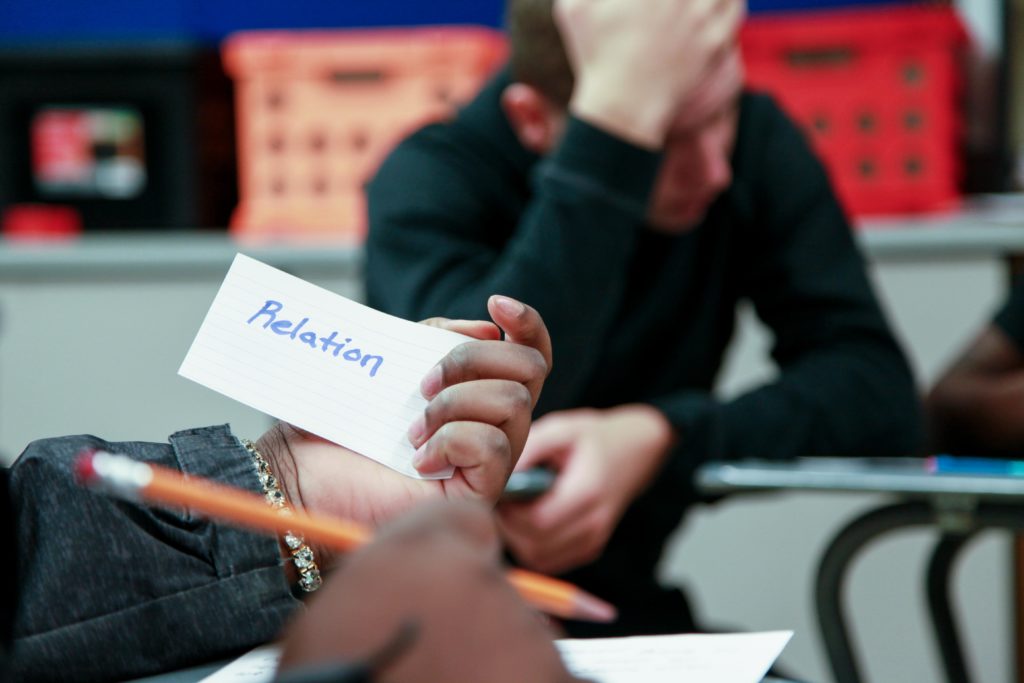
The students did not disappoint. “Like parallel lines, some soulmates never meet,” one student revealed in his group’s performance. Most groups selected just a few students to deliver their words in the culminating performance. Some soloists represented their classmates. “Word pairs are like the relation to life, we are all like terms so we don’t have to fight.” Performers garnered many cheers and rousing support from the teachers and peers populating the auditorium. And everyone involved in the residency left with a much stronger understanding of algebraic vocabulary and a knowledge of terms they won’t soon forget.
So, what do you call a collection of two or more equations with the same set of unknowns? A system. You call it a system.
The Arts Empowered Minds Initiative is the combined effort of many groups and individuals seeking to build a movement for increased equity through the arts in their community. With funding from the NEA in 2016, we built partnerships with Anne Arundel County Public Schools (AACPS), Chesapeake Arts Center (CAC), Arts Education in Maryland Schools Alliance (AEMS), Arts Council of Anne Arundel County, and University of Maryland – Baltimore County (UMBC).
smartbeats is Back with Uncle Devin!
smARTbeats returns to WTMD this Saturday, February 10 during the weekly children’s program Young At Heart! On this month’s segment, hostLisa Mathews sits down for a chat with the original “Drumcussionist,” Young Audiences teaching artist Uncle Devin. Tune in and you’ll hear why The Uncle Devin Show has been called “pure edutainment at its finest.”
Devin Walker has been playing percussion for more than 25 years with groups ranging from Fertile Ground to the Great Dizzie Gillespie, and has gained national acclaim as a leader in the children’s music industry with his unique musical style, real percussion instruments, and the latest in electronic drums.
“I realized I wasn’t just there to perform music, I was there to teach.”
In schools, the artist teaches children that percussion instruments are an essential part of history and the human experience. He uses different musical instruments, along with his award-winning book, “The ABC’s of Percussion with Music CD,” to help students understand how sounds made by percussion instruments were used to communicate. “If we never spoke a word, we could communicate through music,” said Devin.
The musician didn’t begin his career performing for children, but spending time with the young kids in his life certainly helped to steer him on that course. Devin’s niece loved his music so much that she once took recordings of her uncle reciting stories along with music to school so she could share them with her class. The children loved listening to their friend’s ‘Uncle Devin.’ “Soon enough, people began to refer to me with that title and that’s how the name came about.”
They weren’t the only kids that his music and stories stuck with. After performing in a school in Baltimore, he received a phone call from a friend. He suddenly heard his friend’s daughter on the line, reciting some of the same concepts he had shared with the school children earlier that day. She had been in the audience! “I thought, she’s got it! That was a wonderful moment because I realized I wasn’t just there to perform music, I was there to teach.”
Young At Heart airs weekly from 7 to 8 am on Saturdays, featuring music that appeals to parents and children alike. Previous shows have featured music by Wilco, David Bowie, Andrew & Polly, Weezer, and others.
Listen to Uncle Devin online now!

Bloomberg Arts Internships to Expand this Summer
The Bloomberg Arts Internship program is returning to Baltimore this summer, expanding to 35 paid, six-week internships for Baltimore City rising seniors at local arts and cultural institutions. Running June 18 to August 3, students will participate in college and career readiness preparation through hands-on, real work experiences in the arts and engaging professional development.
Applications are now being accepted for interns and host organizations. Rising high school seniors may apply until March 30, 2018. The deadline for Baltimore area arts organizations interested in hosting interns is March 2, 2018. Both applications can be found here.
The internship program is managed by Young Audiences through the support of Bloomberg Philanthropies. Bloomberg Philanthropies increased its support from 25 students last year.
The 35 Bloomberg Arts Internships interns, selected through a multi-step application and interview process, will work with arts organizations three days a week, visit cultural institutions once a week, and engage in professional development trainings once a week. Students will develop organizational work plans, start college applications, analyze art, and complete final presentations highlighting their experiences to be shared with the community on the last day of the program. Internship focuses vary among organizations to include production, education, development, community engagement, artist engagement, video, music, administration and more. Host organizations will include performing arts centers focusing on dance and music, art museums, libraries, theatres and television studios.

“The Bloomberg Arts Internship program creates wonderful opportunities for young people in Baltimore while expanding the impact and engagement of our vibrant arts community,” said Mayor Catherine E. Pugh. “It’s so rewarding to witness talented students learning, developing their potential and becoming leaders. We need to do everything we can to support them. I am continuously thankful for Bloomberg’s on-going commitment to improving the lives of people in Baltimore.”
“Bloomberg Philanthropies’ generous commitment to not only return the program to Baltimore, but to expand it, is a testament to the power of this program and the incredible students and arts organizations in Baltimore,” said Stacie Sanders, Young Audiences President & CEO. “We’re overjoyed for the opportunity to manage a program making such an impact—showing the arts as a viable career path.”
Building Up STEAM
Written by Barbara Krebs,
Young Audiences volunteer and Sunburst Society member
If you follow education trends even a little, you can’t avoid the STEM acronym. In fact, at many area high schools, getting a slot in the highly popular STEM (Science, Technology, Engineering, and Math) magnet program is tricky at best.
Why is that? Why do people automatically assume that if you want your student to get ahead in life, your best bet is to seek out an education that prioritizes a STEM-based curriculum over one that values the humanities or visual and performing arts? Now, enrolling in a STEM-focused program is certainly not bad advice. But, it’s definitely not the only path to success as one recent Washington Post article reported.
“Kids have been educated in a computer world. But that computer world continues to threaten traditional jobs, so success will rely on the ability of students to innovate and use tools in a non-traditional way.”
In the article, “The surprising thing Google learned about its employees – and what it means for today’s students,” the Post reported on a 2013 study that Google conducted on its own hiring practices. Its founders, with solid backgrounds in computer science, felt certain that only “technologists can understand technology.” But after every bit of data was gathered and analyzed, the company discovered something unexpected. Of the top eight criteria considered essential for a top employee, STEM expertise rated… um… eighth.
This led to a deeper dive into the data, which ultimately led to Google re-evaluating its employment processes and putting more emphasis on hiring “humanities majors, artists, and even MBAs.” Other companies (such as Chevron and IBM) have also discovered the positives of hiring liberal arts majors because they “prize their ability to communicate.”

On a personal level, I feel very strongly about this. My daughter, Colette, spent seven years (three in middle school and four in high school) pursuing a Performing and Visual Arts education. She learned to sing, dance, act, write, and most importantly from my perspective, think creatively. And while she was singing and acting her way through high school, she was also taking AP Physics and Calculus and learning to wire circuit boards. So it didn’t come as a huge surprise when she enrolled in Engineering as a college freshman.
While some people were shocked at the 180° turn she made, I viewed it as the logical conclusion to a style of learning that she honed as an arts major in high school. Combining a love of math and science with the arts is not as unusual as you might think.
“Finding a path to my final images is a complex choreography of math, my sensibilities as an artist/scientist, and the subtleties of the subject.”
Take, for instance, Dr. Tim Christensen, biology professor at East Carolina University (ECU) and Senior Faculty Fellow in their Honors College (full disclosure – that’s how I first met him, when touring ECU with my daughter, who was accepted into both ECU and their Honors College). Dr. Christensen is primarily a scientist but also an artist. Merging the two disciplines, he fully embraces and personifies the concept of STEAM (Science, Technology, Engineering, Arts, and Math).

I was immediately struck while perusing the awe-inspiring galactic photographs on his website, AstroWimp. “As an artist, I’ve been heavily influenced by my scientific training,” he wrote. “To a scientist, images are ‘data.’ Standing in both art and science worlds, I attempt to convey the art of the data.” In his role as teacher, Dr. Christensen transfers the wonder he experiences as a scientist and an artist to his students.
He readily admits that while he finds jumping back and forth between scientific and artistic worlds a natural leap, that is not the case with every scientist. “Some are still wary of anything that can’t be measured scientifically.” Nevertheless, he continues to champion the intersection of science and art, as evidenced in his own artwork. “Finding a path to my final images is a complex choreography of math, my sensibilities as an artist/scientist, and the subtleties of the subject.”
Dr. Christensen is currently collaborating with a fellow faculty member, Daniel Kariko, Associate Professor of Fine Art Photography. Their project, dataSTEAM, “focuses on artists who work directly with scientists to develop a deep understanding of the data, preparing artists to contextualize data in their art, connecting both disciplines… art to science, and science to art.”
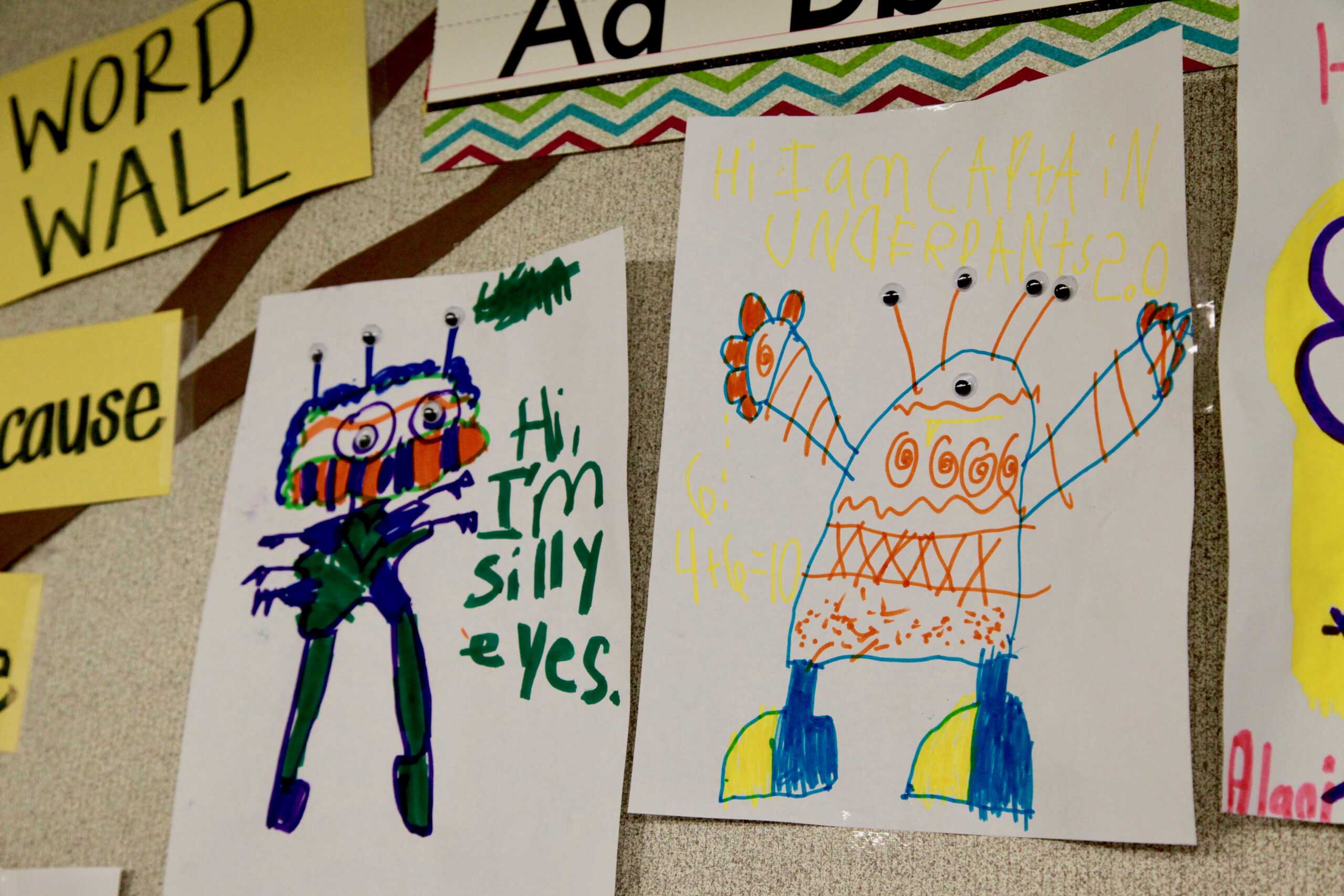
Starting in the fall semester, the two will “facilitate collaborations between Art and Honors/Science students” leading to a gallery exhibit at the university. But more important than the exhibition is, of course, the concept of cross-fertilization between the two disciplines.
As Dr. Christensen explained it, “Kids have been educated in a computer world. But that computer world continues to threaten traditional jobs, so success will rely on the ability of students to innovate and use tools in a non-traditional way.” He feels that merging science and art will create students who are quicker to think outside the box and can straddle both the worlds of imagination and hard-core data.
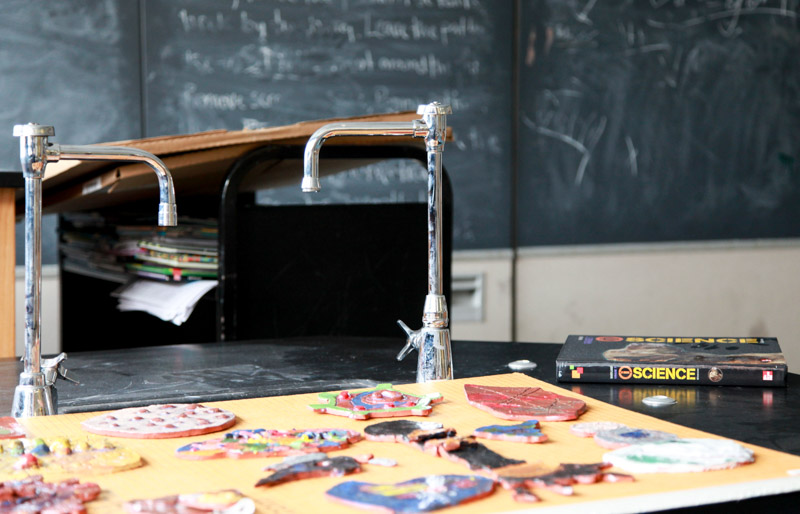
Similarly, what Google has identified as the top characteristics of successful employees are not unlike the same skills that educators and other business leaders identify as being critical to a person’s success in careers, in college, and as a citizen: critical thinking, collaboration, communication, and creativity. These are behaviors that Young Audiences’ teaching artists observe and nurture every day among students in arts-integrated classrooms. And so, for those folks who doubt the value of arts integration into core curriculum subjects such as science and math, the, ahem, data demonstrate that arts and science together create a more balanced individual who can successfully work in today’s fast-paced, ever-changing work environment.

But don’t take my word for it, just ask my daughter. In a recent phone call, Colette was excitedly discussing her Statics class. The definition of her Statics class from ECU’s website- the analysis of equilibrium of particles, addition and resolution of forces, equivalent system of forces, equilibrium of rigid bodies, centroid and moment of inertia, structural analysis, internal forces, friction, and virtual work- left my head spinning.
When I commented on the apparent difficulty of the class, she assured me breezily, “Oh Mom, it’s easy for me. After all those arts classes in high school, I can see in 3-D.”
Jamaal “Mr Root” Collier Talks smARTbeats on Young At Heart
smARTbeats is back this Saturday, January 13 on WTMD during the weekly children’s program Young At Heart! On this month’s segment, host Lisa Mathews sits down for a chat with Hip Hop performer, YA teaching artist, and Maryland Wolf Trap Artist, Jamaal “Mr. Root” Collier.
A dynamic and engaging Hip Hop artist, Jamaal has been working with Young Audiences/Arts for Learning since 2007, has served on its artist roster since 2013, and was named Artist of the Year for 2016. His energy and passion for the arts is boundless, and show in the volume of work he does, not only offering assemblies and long-term residencies in schools, but also providing professional development for teachers.
By incorporating rapping, vocal percussion, and dynamic stage presence, Jamaal articulates his passionate appreciation for his artistry every time he teaches and performs.
During the segment, you’ll hear how the artist, who is also half of the family-friendly beatboxing duo Baby Beats, invites students to learn, listen, and participate.
“(Mr. Root’s program) was a true testament of how you can take learning and make it fun,” said Ms. Hines, Principal of Villa Maria School after the artists’ residency. “He was able to get some of the most resistant kids engaged.”
Jamaal uses rapping, freestyling, and beatboxing to appeal to a variety of learners. His students craft rhyming couplets and non-traditional quatrains to analyze and summarize their course content, gaining a deeper understanding of lesson material through elements of Hip Hop.
Take a look for yourself:
Staci Taustine, Fifth Grade Teacher at F.L. Templeton Preparatory Academy said that through her class’ residency with Mr. Root, students didn’t just advance academically, but socially.
“My students learned how to be vulnerable with one another, brave enough to share their feelings, and empowered to use their voices to express everything they learned,” she said. “Each and every one of my students came away with a unique perspective on who they are as individuals.”
Jamaal’s passion for the arts is clear, as is the impact it has had on his life. “Our life without the arts can be so empty,” he has said. Thankfully, the artist shares the power of art, music, and rhyme with students and their teachers across the state of Maryland every day.
Young At Heart airs weekly from 7 to 8 am on Saturdays, featuring music that appeals to parents and children alike. Previous shows have featured music by Wilco, David Bowie, Andrew & Polly, Weezer, and others.
Hear Jamaal “Mr. Root” Collier online now:

Young Audiences Hires New Chief Operating Officer, Creates New Director of Summer Learning Position
Young Audiences, the statewide nonprofit that boosts student achievement by bringing arts integration into classrooms and children’s learning experiences, has hired Leyla Layman as its new Chief Operating Officer.
Former Young Audiences COO Kurtis Donnelly will remain with the organization, taking on the newly created role of Director of Summer Learning, to enhance and expand Young Audiences’ summer programming and impact.
Leyla Layman is a career public servant, most recently serving as Deputy Executive Director, Operations and Chief of Staff for the Maryland Department of Human Services’ Child Support Administration where she managed strategic initiatives to increase program effectiveness and worked to identify and create systems to improve operating efficiency.
“Working to improve outcomes for children and communities has been the primary focus of my career,” said Layman. “Young Audiences offers an innovative approach of using the arts to keep children interested in learning. I am honored and excited to become part of the team.”
Previously, Layman was Director of the Baltimore City Health Department’s Office of Youth Violence Prevention and was responsible for program oversight, expansion, and evaluation.Under her leadership, youth outreach increased by 150%.
“Leyla’s experience working with communities, families and local institutions made her an ideal candidate for our COO,” said Stacie Sanders Evans, Young Audiences President and CEO. “Welcoming a uniquely talented, proven leader like Leyla will allow our organization to connect with more children, sparking their passions with arts-integrated learning. I’m excited to work with her.”
Kurtis Donnelly’s transition to Director of Summer Learning comes as Young Audiences expands its focus on year-round learning, implementing and growing programs in the summer. In his nearly three years as COO, Donnelly streamlined the success of Young Audiences’ Summer Arts & Learning Academy while implementing and coordinating all of Young Audiences programming.
“Kurtis’ leadership and understanding of how arts-integrated summer learning can be effective puts Young Audiences in a great position for continued success,” said Sanders Evans. “Engaging children in ways that make learning fun is crucial to uncovering opportunities for positive development and growth. I’m incredibly thankful that Leyla and Kurtis are here to help build on Young Audiences’ work doing just that.”
“Working to improve outcomes for children and communities has been the primary focus of my career,” said Layman. “Young Audiences offers an innovative approach of using the arts to keep children interested in learning. I am honored and excited to become part of the team.”

Started in Baltimore in 1950, Young Audiences is the nation’s largest arts-in- education provider. As the Maryland affiliate, Young Audiences/Arts for Learning (YA) is devoted to enriching the lives and education of Maryland’s youth through educational and culturally diverse arts programs. Through Young Audiences, professional artists from all disciplines partner with leaders and schools for over 7,000 hands-on arts learning experiences that reach more than 190,000 Maryland students. Young Audiences envisions a Maryland where the arts are valued for their capacity to transform lives, and where every student is immersed in opportunities to imagine, to create, and to realize their full potential.
America Celebrates: Maryland
In 1923, a 48-foot Balsam fir was erected by the District of Columbia Public Schools to the south of the White House. The tree was decorated, lit, and named the “National Christmas Tree.” Though the trees have varied, the National Christmas Tree still stands, 94 years later. Surrounding the National Christmas Tree is the America Celebrates display where smaller evergreen trees are decorated with handmade ornaments to represent the unique history, culture, and heritage of each of the nation’s 56 states and territories.
This year, the Maryland State Arts Council selected YA roster artist Katherine Dilworth to design the ornaments for the Maryland state tree for the America Celebrates display. The artist has been integrating fabrics and felted fibers into her art for more than 20 years. Her work is shown in galleries throughout the U.S. and was included in two books. In her school residencies, Katherine teaches students how to sculpt loose wool into solid shapes and colorful, textured murals. For this project, however, her materials were quite different.

The artist worked with Ewell Elementary School students on Smith Island to make the ornaments for the 2017 Maryland state tree. Smith Island, Maryland’s only inhabited Chesapeake Bay Island, has about 250 residents and can only be reached by boat. Ewell, the largest of the communities on Smith, is home to the island’s sole elementary school (the K-7 Ewell Elementary School serves a total of 11 students).
The Chesapeake Bay is integral to the lives of the island’s inhabitants where watermen collect fish and shellfish, like oysters and Blue crabs from its waters. Katherine chose to craft the ornaments from oyster shells to bring attention to the Bay’s endangered species. “I wanted to highlight the Chesapeake Bay on the Maryland tree, particularly focusing on animals and plants that have been threatened or endangered,” said the artist. She and the students looked at animals like the American Bald Eagle, once threatened by human behavior, but whose populations have since been revitalized.
“I contacted the Ewell Elementary School on Smith Island because the kids there would have an intimate knowledge of life on the bay,” Katherine explained. The students painted the smooth, concave surfaces of the sea creatures’ shells with wildlife native to the region: Baltimore checkerspot butterflies, Blue crabs, Seagulls, Geese, Rockfish, and of course, oysters. The decorated mollusks awash in the blues of the Chesapeake hang proudly on the Maryland State tree this year, reminding us of our relationship with the natural world and representing a way of life only found in Maryland.
The America Celebrates display is free and open to visitors throughout the month. Learn about last year’s ornaments here.
Katherine Dilworth introduces students to the centuries-old art form of felting. Learn how you can bring her programs into your school today by visiting her artist page.

Algebra in the Drum Shop: Plotting the Rate of Change with Kevin Martin
“Will I ever use this in real life?” A teacher could rattle off the professional fields that a mathematician could enter after pursuing a degree when students challenge, “Why do we have to learn this?” Or, they could show them what they can do now with the skills they are practicing. The arts are good for that, and YA roster artist Kevin Martin is an expert at teaching students how to employ their new mathematical knowledge in a very cool and tangible, real-world way.

Kevin has been building and playing steel drums, also called steel pans, for more than 20 years. Through his company Rockcreek Steel Drums, the artist has built thousands of steel drum instruments for clients across the world, and now, he is sharing this knowledge through a residency with students at North County High School (NCHS) in Anne Arundel County. “A steel pan is really a musical sculpture,” says Kevin. These sculptures are tuned instruments that have been methodically hammered into a very specific shape and thickness from the flat base of a steel barrel.

This residency came to NCHS thanks to professional development for teachers in arts integration as part of The Arts Empowered Minds Initiative. Through the initiative, schools are learning to use arts integration as a strategy for boosting student achievement and engagement. Classroom teachers and school administrators are building sustainable partnerships with teaching artists and arts organizations that inspire students and use the creative process to make meaningful, real-world connections to the curriculum.
Kevin worked with 9th grade algebra teacher Sarah Dobry to teach students how steel drum design and fabrication requires the same mathematical concepts explained in their textbooks.
Using careful measurements and the same tools and algebraic formulas that Kevin uses in his shop, the students learn to graph a drum’s rate of change to see how the sides of the pan slope inwards at different rates. Because they’re not just learning, but applying the strategies and formulas they’ve learned, students appreciate the instrument’s transformation from flat to concave and the depth and location of each depression.
Of course, the class also learned to play the instruments. Pairs of students learned where to hit specific notes on the pan and how to control their drumsticks to achieve different effects, rolling them over a note to extend a sound, or striking it purposefully.
As the students gained confidence, they took turns demonstrating their ability. Ms. Dobry was impressed by her class’ excitement and eagerness to participate, “The kids who are usually silent in math have been volunteering to be the example this week.”
“As a math guy, I enjoy the challenge of learning the notes and shaping the metal,” Kevin told Trumpf Express, a professional magazine published for the sheet metal processing trade. “As a musician, I try to recreate the essence of sound.” The artist gave Ms. Dobry’s ninth graders an introduction to what’s possible when you combine an academic skill with the art form you love. And perhaps some of them even discovered a new talent.

The Arts Empowered Minds Initiative is the combined effort of many groups and individuals seeking to build a movement for increased equity through the arts in their community. With funding from the NEA in 2016, we built partnerships with Anne Arundel County Public Schools (AACPS), Chesapeake Arts Center (CAC), Arts Education in Maryland Schools Alliance (AEMS), Arts Council of Anne Arundel County, and University of Maryland – Baltimore County (UMBC).
123 Andrés Talks Music for Bilingual Learners on smARTbeats!
smARTbeats returns Saturday, December 2 during the weekly children’s music program Young At Heart on WTMD. On this month’s smARTbeats segment, Young At Heart host Lisa Mathews sits down with YA roster artists and Latin Grammy winners Andrés Salguero and Christina Sanabria, better known as 123 Andrés.
The two have brought many multicultural performances and bilingual musical experiences in Spanish and English to children across the United States and Latin America. Their second album, Arriba Abajo, even won the Parents’ Choice Gold Award for children’s music!
Andrés’ career began at a very young age in his home country of Bogota, Colombia, performing and even recording an album at only eight years old. His love of children’s music and the opportunity to teach and inspire through music, however, came to the artist as an adult. And we are so happy it did! His talent, energy, and charisma make it easy to see why Billboard Magazine called him “a rockstar for little language learners!”
Families could spend hours surfing just their youtube channel filled with the songs, videos, and cartoons that have kids and adults alike hooked and learning. But these catchy, uplifting beats will make you want to enjoy 123 Andrés in person.
“My aim is for children to emerge more accepting, tolerant and curious when they meet others who are different from them,” says Andrés. Likewise, he says, “For Latino children, it’s especially important to have opportunities to see a positive role model who looks like them and to experience programming that celebrates their language and background.”
123 Andres’ audiences are treated to a tour of Latin America, learning new vocabulary, history, culture, and geography through songs in both Spanish and English, and dances like salsa, bachata, plena, mariachi, vallenato, bolero, champeta, and more.
What 123 Andrés brings into schools is fun, plain and simple. And fun is something everyone understands no matter what language you’re speaking! 123 Andres will make the whole family salta, salta (jump, jump)!
Young At Heart airs weekly from 7 to 8 am on Saturdays, featuring music that appeals to parents and children alike. Previous shows have featured music by Wilco, David Bowie, Andrew & Polly, Weezer, and others.
Hear YA teaching artist and musician 123 Andrés online now!








